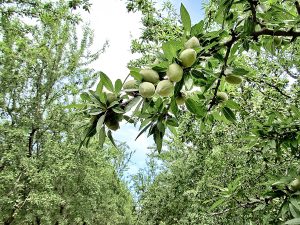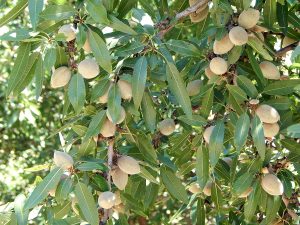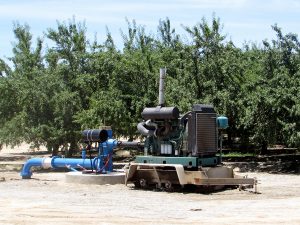
Director, Member Relations
This report covers conditions and observations made between Monday, May 2 and Sunday, June 5, 2016.
Northern Region –
Conditions varied significantly in the Sacramento Valley during May, reflecting the effects of cut-off low pressure systems that brought rainfall to the region, followed by high pressure that promoted near record temperatures throughout the Central Valley. While daily maximum temperatures in the first half of the period spent much of the time between the lower 80’s and mid 90’s, readings between May 5th and 8th dipped into the lower 60’s as a rain fell across much of the region. Temperatures fell again on the 20th as a second system swept across the Valley, bringing rainfall totals for the period to as much as an inch in the wettest locations. Temperatures turned abruptly more summer-like during the final week of the period when a stubborn high pressure settled over the state, driving readings over the 100-degree mark for the first time this year. Morning low temperatures followed the pattern established by the afternoon maximums, with readings ranging from the lower 50’s to low and mid 60’s.
Crop development continues in the Sacramento Valley. While some have noted that development is running behind last year’s particularly accelerated pace, the crop nevertheless remains on a “normal” schedule. Orchards are display strong growth rates and observers have noted that nuts in all areas are now fully solid. While the trees are carrying their heaviest weight of the year, observers have reported that there are no serious issues with broken branches and that the orchards are carrying the loads well.
Growers have been monitoring orchards closely with an eye towards hull split, just a few weeks away. Many sustained significant damage caused by Navel Orange Worm in the 2015 crop and are planning on employing the best possible controls for eliminating a repeat of last year’s problems. Better mummy shaking conditions over the past winter will certainly help, by reducing the number of worms over-wintering in the orchards. However, all in the region are monitoring the insect’s life cycle closely, aiming to target required treatments to the most effective timing as the hulls begin to split and the crop becomes the most vulnerable.
Owing to the geography of the region, growers in the Sacramento Valley are enjoying adequate supplies of water needed for irrigation this year. Growers will continue to irrigate normally, up to the initiation of the hull split. Weed control and irrigation will dominate grower’s activities over the coming month as they work to meet their orchards needs during the summer heat.
Central Region –
Conditions varied widely during May in the Central Region, with rain in the first week of the period and record setting high temperatures in the period’s final week. Rain fell across the region on May 6th, brought in by a cut-off low that dropped from trace amounts to as much as one-half inch in official reports. However, growers also reported heavy downpours from localized cells that dropped as much as one inch in the heaviest locations. Daily maximum temperatures cycled between in the lower 60’s and lower 90’s during the first half of the month, then rose steadily to as high as 105 degrees during the final days of May. Morning minimum values were also reported at comparatively warm levels, with readings ranging between the lower 50’s and lower 60’s throughout the period.
Observers are reporting that the developing crop in the central region is progressing well and the orchards are in generally good condition. Nuts of all varieties are now fully solidified and the trees are showing the weight of the developing crop. Nearly all orchards are also displaying significant amounts of new growth, a sign that growers have met their orchard’s nutrient and water requirements. However, while the vast majority of the region’s orchards are in good condition, growers’ dependent on ground water of poor quality still face problems and their orchards are once again beginning to show signs of excess salinity or high pH water. This is particularly the case in areas served by the Federal Central Valley Project, where allocations of surface water have been limited to 5% of contracted amounts. While the rain that fell early in the period created significant difficulties for cherry growers in San Joaquin and Stanislaus counties, almond growers had little cause for immediate concern. However, the rain does increase the potential for Scab and Rust, fungal diseases that can cause serious defoliation later in the season.
Growers have been monitoring insect populations and life cycles within their orchards closely. Some have opted to treat for Navel Orange Worm as a “May spray” treatment, aiming to reduce the population below economic levels and reduce impacts on the crop at hull split. Others will treat a hull split, now just three to four weeks away. Meanwhile, irrigation and weed control continue to be prime activities throughout the northern San Joaquin. Both have increased in intensity as the temperatures rise and water requirements increase.
Southern Region –
The southern region experienced a wide range of weather during May, from locally heavy rain early in the month to near record temperatures in the period’s final week. Daytime highs dipped from mid-80’s as the period began, down into the low to mid-60’s as a cut-off low spread clouds and moisture over San Joaquin Valley. While much of the region failed to receive any rainfall, growers along the west side reported from trace amounts to as much as an inch of rain from localized heavy showers. Following the rainfall, temperatures rebounded into the low to mid 90’s, then dipped briefly back into the lower 70’s as another, weaker system passed over the region. Condition’s finally turned toward to more summer-like conditions during the final week of the period as high pressure forced temperatures above the 100-degree mark for the first time this year. Morning lows followed a more stable pattern ranging from the lower 50’s to lower 60’s throughout the period.
The 2016 crop continues its steady development in the southern San Joaquin Valley. Observers are reporting that the vast majority of orchards are in very good condition and presenting new growth, reflecting the benefits of good winter rainfall and adequate irrigation supplies. Nevertheless, problems can still be spotted along the west side of the region in orchards that have endured stress from poor quality or inadequate water in past years. Observers in the most severely impacted areas have noted evidence of salt burn and reduced vigor as growers are once again forced to irrigate with poor quality groundwater. Growers drawing water from the Federal Central Valley Project are the most dependent on groundwater since allocations of surface water have been limited to 5% of contracted amounts.
Growers have noted that kernels of all varieties have become fully solid and that the shells within the nuts have hardened enough to all but eliminate susceptibility to damage from Leaf-Footed Plant Bugs. The weight of the crop is now easily seen as branches bow under the burden of the nuts, which are now at their heaviest stage of development.
Growers and their Pest Control Advisors have been monitoring insect populations within the orchards closely. Some treated for Leaf-Footed Plant Bugs while others have opted to treat for Navel Orange Worm, aimed at reducing damage to kernels when the hulls split in approximately 4 weeks. Increasing populations of web-spinning mites have been reported. However, observers have not noted any treatments as of yet. Growers are reluctant to initiate treatments solely for mites, opting to let predators within the orchards control the pest species for as long as possible. As the crop moves towards hull split, growers will continue to monitor their plantings while providing water and fertilizer to support the developing crop.
The next scheduled report will be posted on Tuesday, July 5, 2016. In the event of any significant occurrences prior to that date, this site will be updated as soon as possible.


